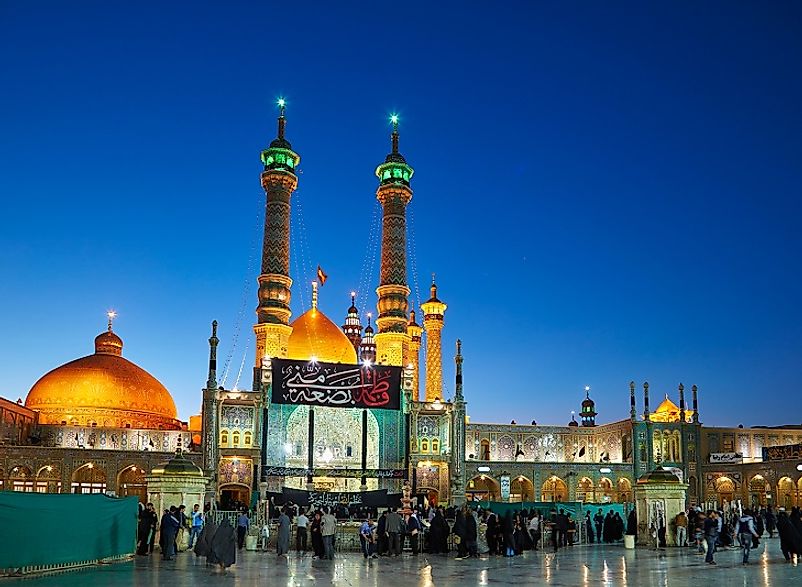Religious Beliefs And Freedoms In Iran

Iran is an Islamic state where close to 98% of the population identifies as being Muslim. The nation’s constitution is largely based on Islamic law. The dominant religious group in Iran is the Shia Muslims. Sunni Muslims are the second largest religious group. The other religious minorities recognized by the State are Zoroastrian, Jewish, and Christian Iranians. The constitution allows for religious freedom as long as it is within the provisions of the law.
Shia Islam
Shia Muslims make up the largest religious group in Iran, comprising an estimated 93% share of the population. Shia Islam was established as the state religion during the Safavid dynasty of 1501. In that period, Sunni Muslims were forced to convert to Shia Muslims in a nationwide campaign. Shia Islam has three main divisions which are Zaidis, Ismailis and Ithna Asharis (Twelvers or Imamis). The Twelvers are the largest group of Shia Muslims. They believe that the 12th Imam, Muhammad al-Mahdi, did not die and that he will return to proclaim justice on earth. Although Shia Muslims are the largest religious group in Iran, they are a minority group in the Muslim faith. The world‘s Muslim population is made up of approximately 80% Sunni Muslims and close to 20% Shia Muslims.
Sunni and Other Muslims
All other types of Islam combine to make up 6% of the total population in the country. Sunni Muslims are the second largest religious group in Iran. They are concentrated in the mountainous region of Larestan in Iran. The Sunnis are said to be indigenous Iranians who escaped conversion to Shia Muslims during the time of Safavid dynasty. Sunni Muslims put much emphasis on the Sunnah, in contrast to Shia Muslims. Sunnis heavily rely on the Prophet Mohamed’s actions and teachings. They view Shia Muslims as heretics. Sunnis dogmatic beliefs are seen as the reason for the emergence of extremist sects in Islam.
Non-Muslims
All other non-Muslim religions combined constitute 1% of the country’s population. The religious minority groups in Iran include Christians, Baha’is, Jews, Zoroastrians, and Mandaeans. The largest Non-Muslim religious group in Iran are its Christians. Christians in Iran date back to the early years of Christianity in the First Century AD. Iran has numerous churches. Christianity is the fastest growing religion in Iran currently.
Zoroastrianism was the predominant religion in Iran before the Islamic conquest in 640 AD. After the conquest, Islam became the predominant religion. Currently a few Iranians still practice Zoroastrianism. The religion is recognized by the state. Zoroastrian believers enjoy representation in the Iranian government. Judaism is among the oldest religion in Iran. It dates back to the old biblical times. Jews in Iran are recognized by the state as a minority religious group. Baha’i is another significant religious minority in Iran. Baha’is are said to have emerged from the Shia Islamic group. The group is not recognized by Iranian Government. They do not have any representation in government. Baha’i followers have suffered discrimination in access to higher education and employment in Iran. They are an oppressed religious minority group.
The Reality of Religious Discrimination
Iran is a Muslim nation that is guided by Islamic law, and its leaders must adhere to Islamic teachings. Nonetheless, the constitution allows non-Muslim minorities to practice their religion. The constitution prohibits investigation of an individual’s beliefs. Despite these constitutional provisions, some religious minorities suffer discrimination and political oppression. Groups such as the Baha’i have been victims of oppression in Iran due to their faith. Conversion from Islam to other religions is forbidden.
Religious Beliefs And Freedoms In Iran
| Rank | Beliefs System | Adherence Among Contemporary Iranian Population |
|---|---|---|
| 1 | Shia Islam | 93% |
| 2 | Other Forms of Islam | 6% |
| 3 | Non-Muslim | 1% |







